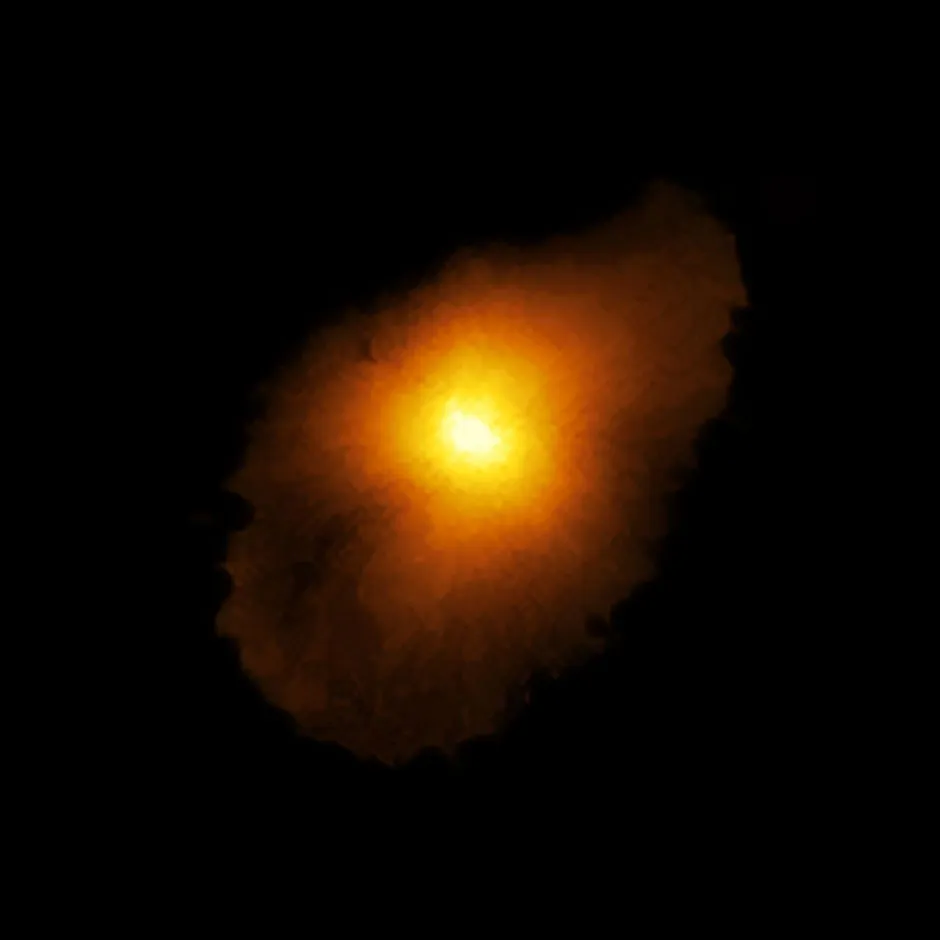Astronomers have spotted an extremely distant galaxy that looks “surprisingly” like the Milky Way.
The galaxy, named SPT0418-47, looks as it was when the Universe was just 1.4 billion years old, just 10 per cent of its current age.This is because it took more than 12 billion years for the light from this faraway galaxy to reach Earth.
According to the researchers, the findings, published in the journal Nature, suggest that this galaxy is “surprisingly unchaotic, contradicting theories that all galaxies in the early Universe were turbulent and unstable”.
Read more astronomy news:
- Exoplanets: First image of multi-planet system around Sun-like star
- Neutron stars locked in 'fiercely tight' orbit could explain Universe's biggest mysteries
Study co-author Simona Vegetti, from the Max Planck Institute for Astrophysics in Germany, said: “What we found was quite puzzling; despite forming stars at a high rate, and therefore being the site of highly energetic processes, SPT0418-47 is the most well-ordered galaxy disc ever observed in the early Universe.
“This result is quite unexpected and has important implications for how we think galaxies evolve.”
Co-author Filippo Fraternali, from the Kapteyn Astronomical Institute, University of Groningen in the Netherlands, added: “The big surprise was to find that this galaxy is actually quite similar to nearby galaxies, contrary to all expectations from the models and previous, less detailed, observations.”
Images of the galaxy were taken using European Southern Observatory’s Atacama Large Millimetre/submillimetre Array (ALMA), a group of telescopes in the Atacama Desert of northern Chile.
Because SPT0418-47 is so far away, the astronomers took help from a nearby galaxy by converting it into a giant magnifying glass, an effect known as gravitational lensing.The result is a rather “misshapen and magnified” version of SPT0418-47, appearing in the sky as a near-perfect ring of light.
Read more about galaxies:
- Star visible to naked eye reveals history of Milky Way Galaxy
- Universe contains ten times more galaxies than previously thought
The astronomers then used computer modelling to reconstruct the galaxy’s true shape and found that it resembled the Milky Way – with a rotating disc and a bulge, where a large group of stars are packed tightly around the galactic centre. According to the researchers, this is the first time a bulge has been seen this early in the history of the Universe.
They say the findings raise questions on how a well-ordered galaxy could have formed so soon after the Big Bang.
Francesca Rizzo, a PhD student from the Max Planck Institute for Astrophysics, who led the research, said: “When I first saw the reconstructed image of SPT0418-47 I could not believe it: a treasure chest was opening."

She added: “This result represents a breakthrough in the field of galaxy formation, showing that the structures that we observe in nearby spiral galaxies and in our Milky Way were already in place 12 billion years ago.”
Although SPT0418-47 has features similar to the Milky Way, astronomers say they expect it to evolve into a galaxy very different from the one that contains the Solar System.They believe SPT0418-47 will join the class of elliptical galaxies, another type of galaxies that are dotted across the Universe.
Why do the centres of galaxies contain black holes?
Asked by: Adam King, Huddersfield
Since the 1960s, astronomers have uncovered evidence that most galaxies contain so-called supermassive black holes at their cores. With masses between a million and a billion times that of the Sun, these leviathans first revealed their presence in so-called quasars – distant galaxies with cores so luminous the only plausible source of power is the intense gravity of black holes devouring matter.
Since then, studies of stellar orbits have shown that even relatively tranquil galaxies like our own Milky Way harbour hefty black holes. Their origin remains a mystery, however. They may have been created by the gravitational collapse of giant gas clouds from which galaxies were formed, or from the merger of many smaller black holes over time.
Another possibility is that one simply grew over billions of years by steadily devouring orbiting stars.
Read more: